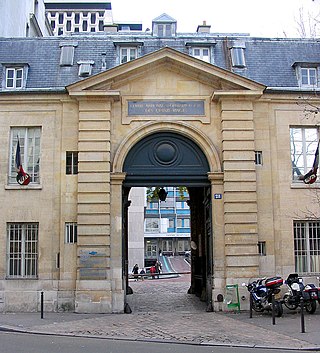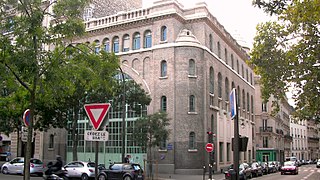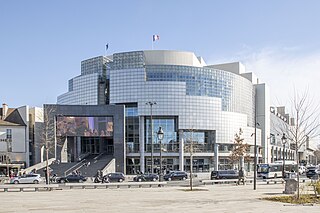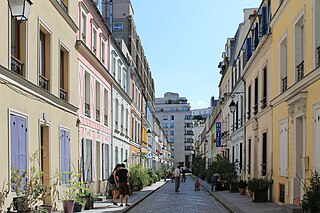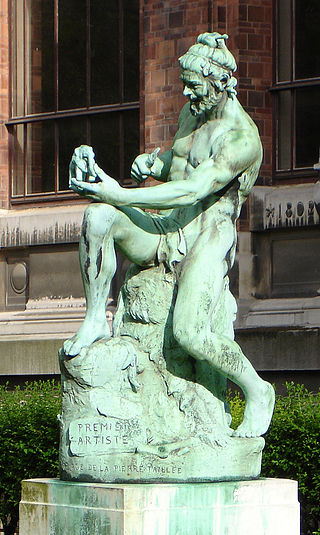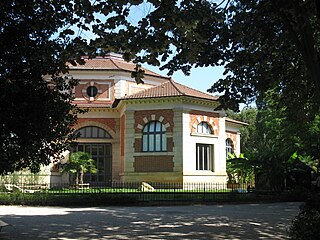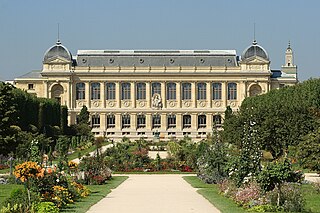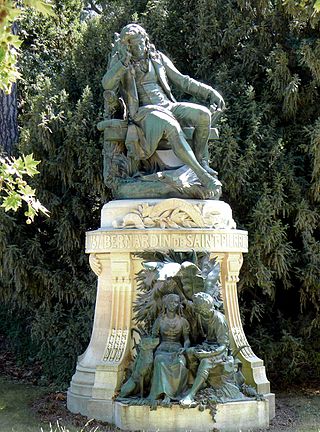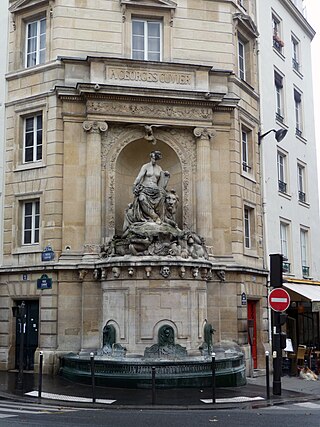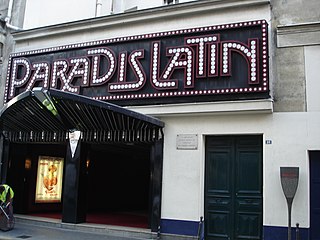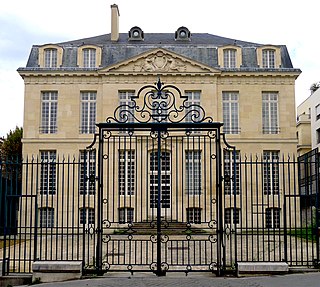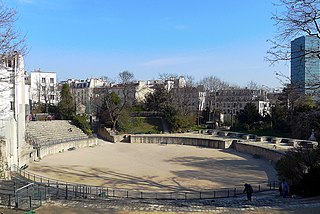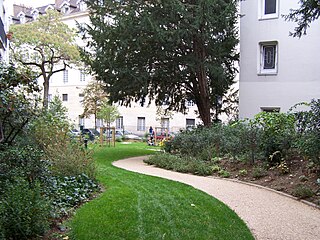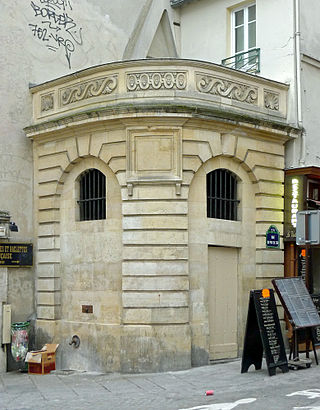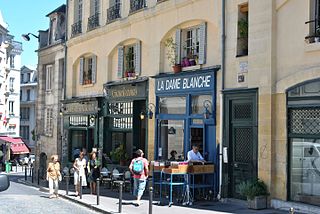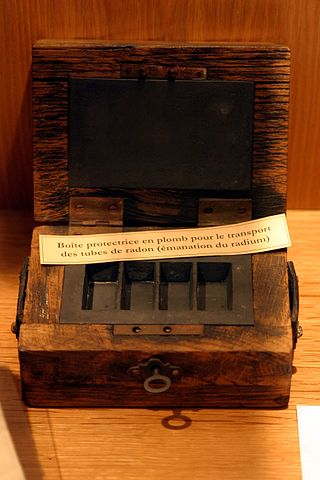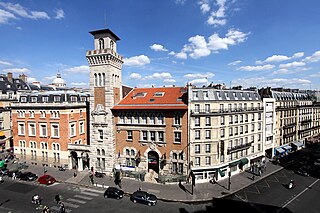Self-guided Sightseeing Tour #12 in Paris, France
Legend
Guided Free Walking Tours
Book free guided walking tours in Paris.
Guided Sightseeing Tours
Book guided sightseeing tours and activities in Paris.
Tour Facts
11.8 km
195 m
Experience Paris in France in a whole new way with our free self-guided sightseeing tour. This site not only offers you practical information and insider tips, but also a rich variety of activities and sights you shouldn't miss. Whether you love art and culture, want to explore historical sites or simply want to experience the vibrant atmosphere of a lively city - you'll find everything you need for your personal adventure here.
Activities in ParisIndividual Sights in ParisSight 1: Jardin Émile Gallé
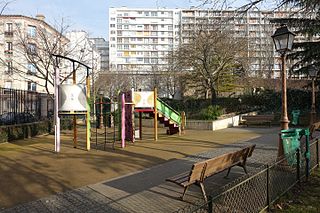
The Émile-Gallé Garden is a public garden in the 11th arrondissement of Paris, in the Roquette and Sainte-Marguerite districts.
Sight 2: Jardin Pierre-Joseph Redouté
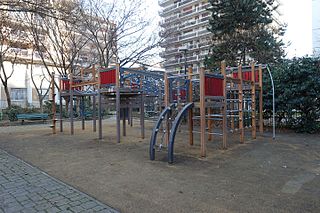
The Pierre-Joseph-Redouté Garden is a green space in the 11th arrondissement of Paris, France.
Sight 3: Square Edmée Chandon
Sight 4: Palais de la Femme
The Palais de la Femme is a building located at 94, rue de Charonne, at the corner of rue Faidherbe, in the 11th arrondissement of Paris, France. Since 1926, it has been a Salvation Army establishment for young girls and single women, and which today also welcomes men. The building is composed of 630 rooms.
Sight 5: Square Raoul Nordling
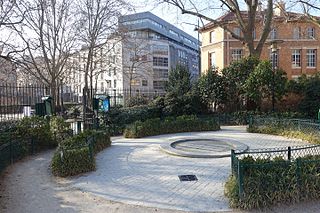
Square Raoul-Nordling is a green space in the 11th arrondissement of Paris. It is located south of the Sainte-Marguerite church.
Sight 6: Jardin Louis Majorelle
Square Louis-Majorelle is a green space in the 11th arrondissement of Paris, France.
Sight 7: Jardin de la Folie Titon
The Jardin de la Folie-Titon is a green space in the 11th arrondissement of Paris, in the Sainte-Marguerite district.
Sight 8: Cour de l'Industrie
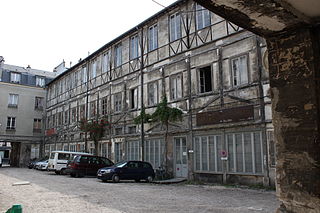
The Cour de l'Industrie is a street in the 11th arrondissement of Paris, France.
Sight 9: Folie Titon
The Titon Folly is a former folly that became a wallpaper factory run by Jean-Baptiste Réveillon, and located in the former Faubourg Saint-Antoine, where the first hot air balloon took off, and where the Paris riots that led to the French Revolution began.
Sight 10: Fontaine de Montreuil
The Fontaine de la Petite-Halle or Fontaine de Montreuil is a fountain in the 11th arrondissement of Paris, France.
Sight 11: Square Léo Ferré
The Square Léo-Ferré, formerly known as the Brûlon-Cîteaux Garden, is a green space in the 12th arrondissement of Paris, France.
Sight 12: Place d’Aligre
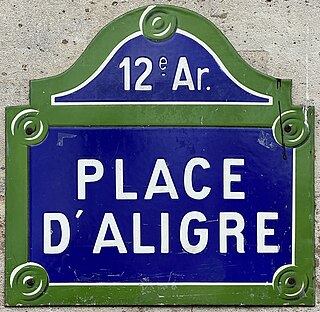
The Place d'Aligre is located in the middle of the rue d'Aligre, in the 12th arrondissement of Paris, France.
Sight 13: La Petite Mairie
The Petite Mairie is a building located in the middle of the Place d'Aligre, in the twelfth arrondissement of Paris, France, opposite the Beauvau market.
Sight 14: Jardin Charlotte Valandrey
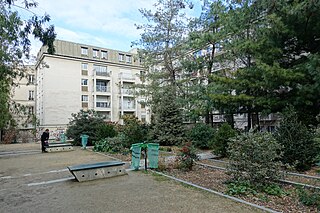
The Charlotte-Valandrey Garden is a municipal green space in the 12th arrondissement of Paris, located at 17, rue Hector-Malot.
Sight 15: Le Train Bleu
Le Train Bleu is a restaurant located in the hall of the Gare de Lyon railway station in Paris, France. It was designated a Monument Historique in 1972.
Sight 16: Marché couvert Beauvau
The Beauvau Market is a covered market located in the 12th arrondissement of Paris, France.
Sight 17: Square Trousseau
Square Trousseau is a square in the 12th arrondissement of Paris.
Sight 18: Cour de l'Etoile d'Or
The Cour de l'Étoile-d'Or is a private road in the 11th arrondissement of Paris, France.
Sight 19: Fontaine Trogneux
The Fontaine de Charonne, formerly known as Fontaine Trogneux, is a historic fountain in Paris, France.
Sight 20: Caserne des Mousquetaires Noirs (ancienne) , dans l'actuel Hôpital des Quinze-Vingts (Centre d'Ophta
The Barracks of the Black Musketeers is a former barracks located at 26 rue de Charenton in the 12th arrondissement of Paris. Built at the end of the seventeenth century, it has been occupied since the end of the eighteenth century by the Quinze-Vingts hospital.
Sight 21: hôpital des quinze-vingts
The Quinze-Vingts National Ophthalmology Hospital is France's national ophthalmology hospital located in Paris, in the 12th arrondissement. The hospital gave its name to the Quinze-Vingts quarter.
Wikipedia: Quinze-Vingts National Ophthalmology Hospital (EN)
Sight 22: RATP Sous Station Électrique
The Bastille substation is a building located in Paris, 4th arrondissement, France. It housed an electrical transformer that converted electric current for the needs of the Paris metro.
Sight 23: Opéra Bastille
The Opéra Bastille is a modern opera house in the 12th arrondissement of Paris, France. Inaugurated in 1989 as part of President François Mitterrand's Grands Travaux, it became the main facility of the Paris National Opera, France's principal opera company, alongside the older Palais Garnier; most opera performances are shown at the Bastille along with some ballet performances and symphony concerts, while Palais Garnier presents a mix of opera and ballet performances.
Sight 24: Coulée verte René-Dumont
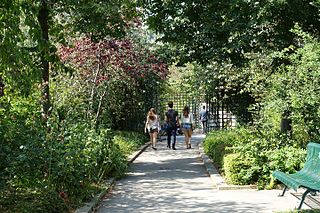
The Coulée verte René-Dumont or Promenade plantée René-Dumont is a 4.7 km (2.9 mi) elevated linear park built on top of obsolete railway infrastructure in the 12th arrondissement of Paris, France. It was inaugurated in 1993.
Sight 25: Rue Crémieux
The Rue Crémieux is a one-block pedestrian street in the 12th arrondissement of Paris, originally built as workers' housing. The street has been widely recommended to tourists for its quaint painted housefronts, and has become a popular destination for filming and for social media photos.
Sight 26: Square Albert Tournaire
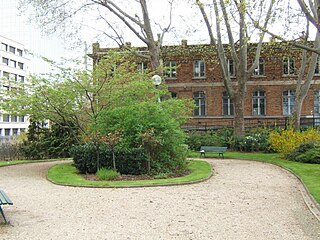
Square Albert-Tournaire is a square in the 12th arrondissement of Paris, France.
Sight 27: Premier Artiste
The First Artist is a statue in the round by Paul Richer presented at the Salon des Artistes Français in 1890.
Sight 28: Ménagerie du Jardin des Plantes
The Ménagerie du Jardin des Plantes is a zoo in Paris, France, belonging to the botanical garden Jardin des Plantes. Founded in 1794, largely with animals brought from the royal zoo of the Palace of Versailles, abandoned because of the French Revolution, it is the second oldest zoological garden in the world. Today, the zoo contains many rare smaller and medium-sized mammals, and a variety of birds and reptiles.
Sight 29: Jardin des Plantes
Get Ticket*The Jardin des Plantes, also known as the Jardin des Plantes de Paris when distinguished from other jardins des plantes in other cities, is the main botanical garden in France. Jardin des Plantes is the official name in the present day, but it is in fact an elliptical form of Jardin Royal des Plantes Médicinales, which is related to the original purpose of the garden back in the 17th century.
Sight 30: Bernardin de Saint-Pierre avec Paul et Virginie
The monument to Bernardin de Saint-Pierre is a monument in the Jardin des Plantes in Paris, France. Created in 1906-1907, it honours Jacques-Henri Bernardin de Saint-Pierre, a naturalist who was the superintendent of the royal garden in the 1790s and who is also known as the author of the novel Paul et Virginie, a classic of French literature. It consists of a bronze statue by Louis Holweck representing the man of letters seated on a stool. This sculpture is itself installed on a pedestal designed by the architect Victor-Auguste Blavette and embellished with a bronze high relief depicting Paul, Virginie and their dog Fidèle.
Sight 31: Ceinture de Feu
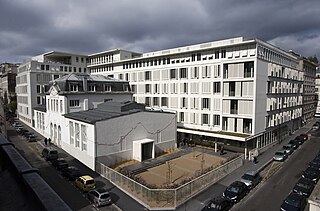
The Ring of Fire is a work by Brazilian artists Angela Detanico and Rafael Lain located in France, in Paris. It is an installation located on the façade of the Institut de physique du globe de Paris (IPGP).
Sight 32: Fontaine Cuvier
The Cuvier fountain is a Parisian monument located at the corner of rue Linné and 20, rue Cuvier, opposite the Jardin des Plantes, in the 5th arrondissement.
Sight 33: Paradis Latin
The Paradis Latin is a theater at number 28, rue du Cardinal Lemoine, in the Latin Quarter of Paris, in the fifth arrondissement, near Notre-Dame, the Panthéon, and the Tour d'Argent restaurant. The closest métro stations are Cardinal Lemoine and Jussieu.
Sight 34: Hôtel Lebrun
The Hotel Le Brun is a private mansion located at 47 rue du Cardinal-Lemoine, in the 5th arrondissement of Paris.
Sight 35: Cavae des Arènes de Lutèce
The Arènes de Lutèce are among the most important ancient Roman remains in Paris, together with the Thermes de Cluny. Constructed in the 1st century AD, this theatre could once seat 15,000 people and was used also as an amphitheatre to show gladiatorial combats.
Sight 36: Square Marius-Constant
The Square Marius-Constant, formerly the Square de la rue Ortolan, is a green space in the 5th arrondissement of Paris accessible by 8, rue Ortolan and by 1-15, rue Saint-Médard.
Sight 37: Fontaine du Pot-de-Fer
The Pot-de-Fer fountain, incorrectly called the "Mouffetard fountain", is located in the 5th arrondissement of Paris, at 60, rue Mouffetard, at the corner of rue du Pot-de-Fer.
Sight 38: Montagne Sainte-Geneviève
The Montagne Sainte-Geneviève is a hill overlooking the left bank of the Seine in the 5th arrondissement of Paris, France. It was known to the ancient Romans as Mons Lucotitius. Atop the Montagne are the Panthéon and the Bibliothèque Sainte-Geneviève. The side streets of the Montagne feature bars and restaurants, for example, in the Rue Mouffetard.
Sight 39: Musée Curie
The Musée Curie is a historical museum focusing on radiological research. It is located in the 5th arrondissement at 1, rue Pierre et Marie Curie, Paris, France, and open Wednesday to Saturday, from 1pm to 5pm; admission is free. The museum was renovated in 2012, thanks to a donation from Ève Curie.
Sight 40: Institut Océanographique de Paris
The Institut océanographique de Paris, is an oceanographic institution founded in 1906 by Albert I, Prince of Monaco, which also includes the Oceanographic Museum of Monaco. The building was designated as a Monument historique in 2004. In 2011, for the 100 year anniversary, it was renamed the Maison de l'Océan.
Share
How likely are you to recommend us?
Disclaimer Please be aware of your surroundings and do not enter private property. We are not liable for any damages that occur during the tours.
GPX-Download For navigation apps and GPS devices you can download the tour as a GPX file.
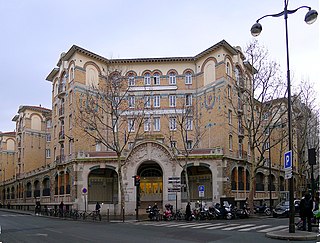
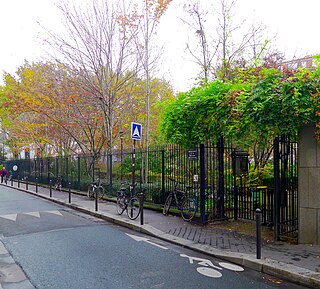
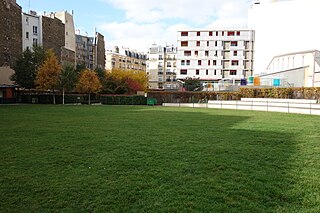
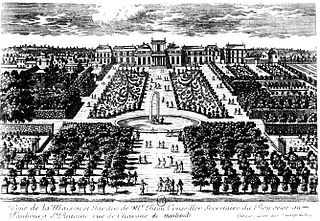
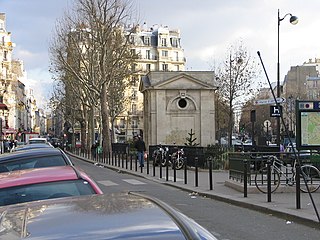
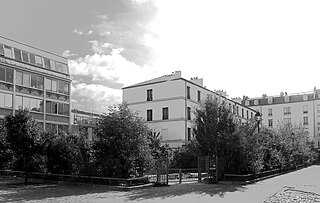
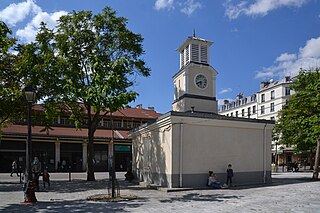
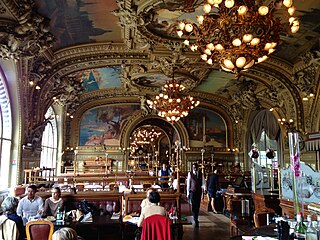
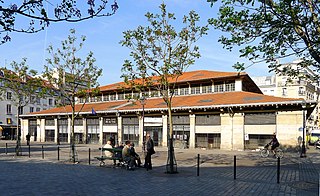
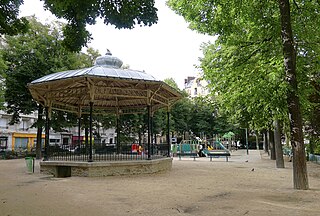
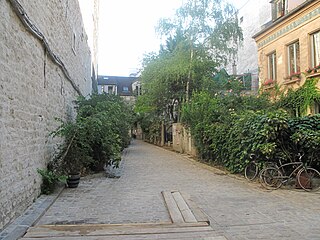
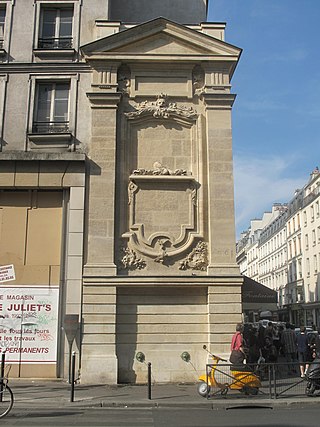
-,-dans-l'actuel-Hôpital-des-Quinze-Vingts-(Centre-d'Ophta.jpg)
